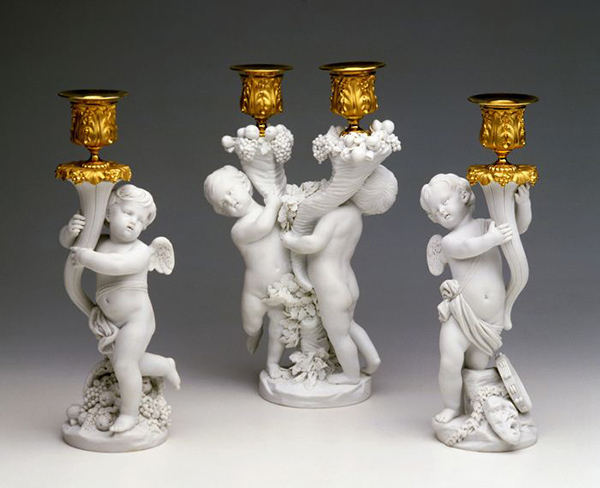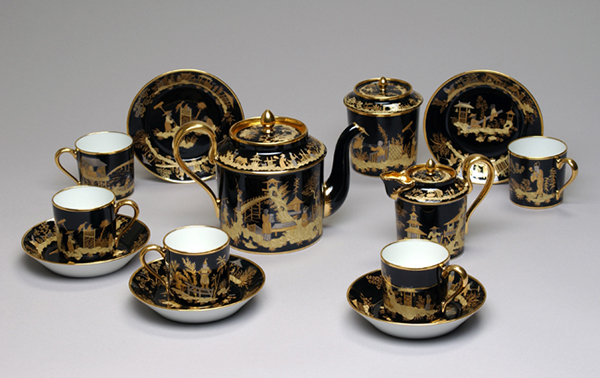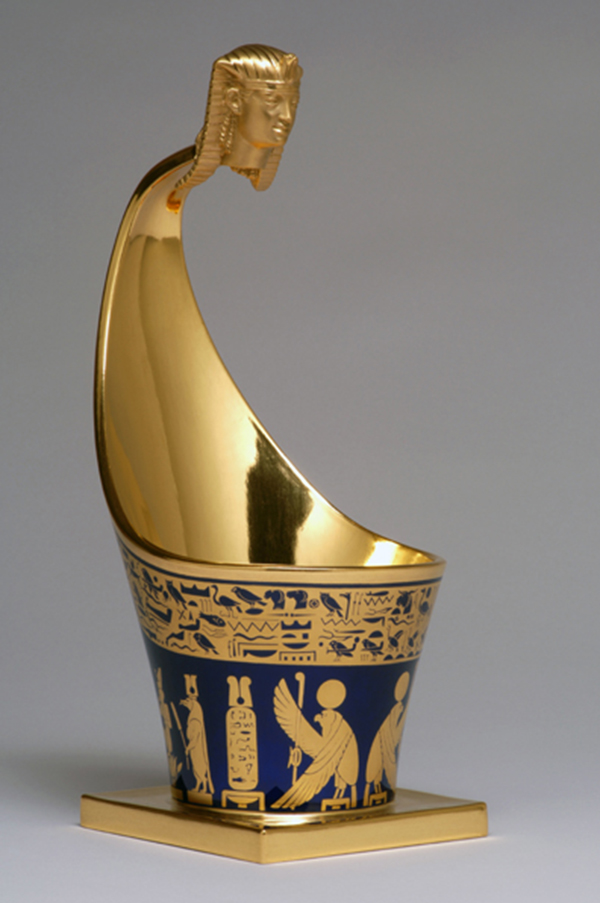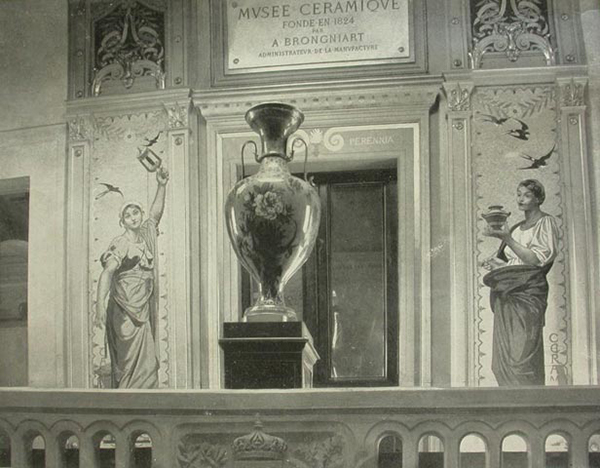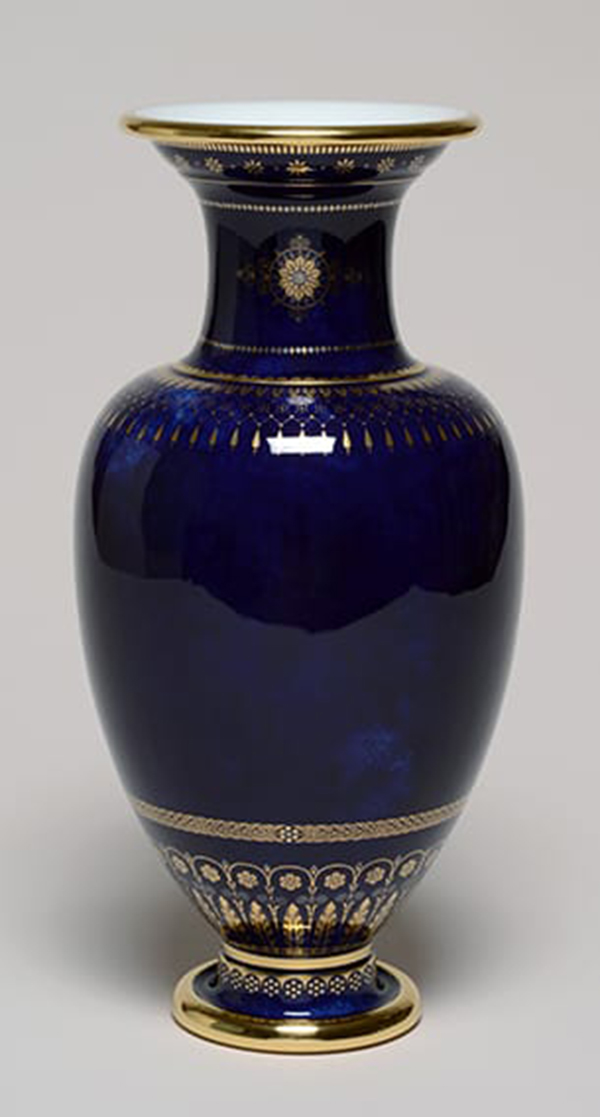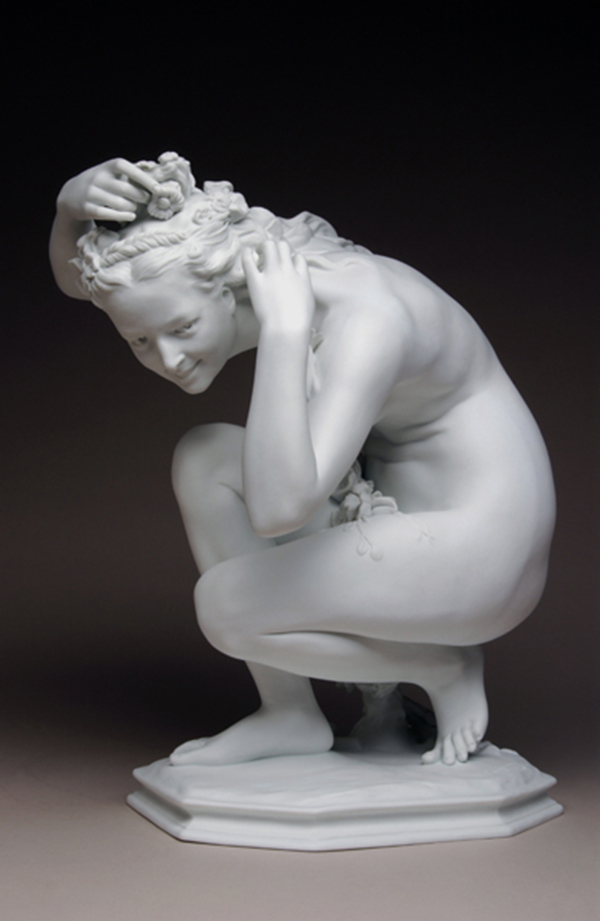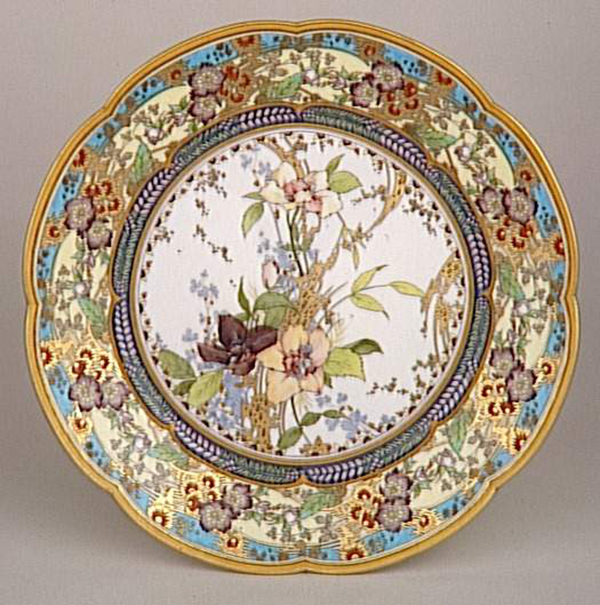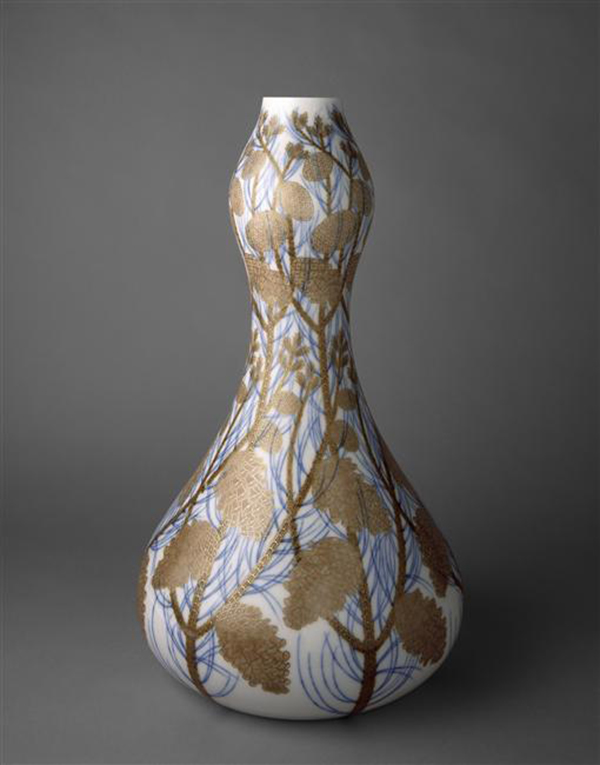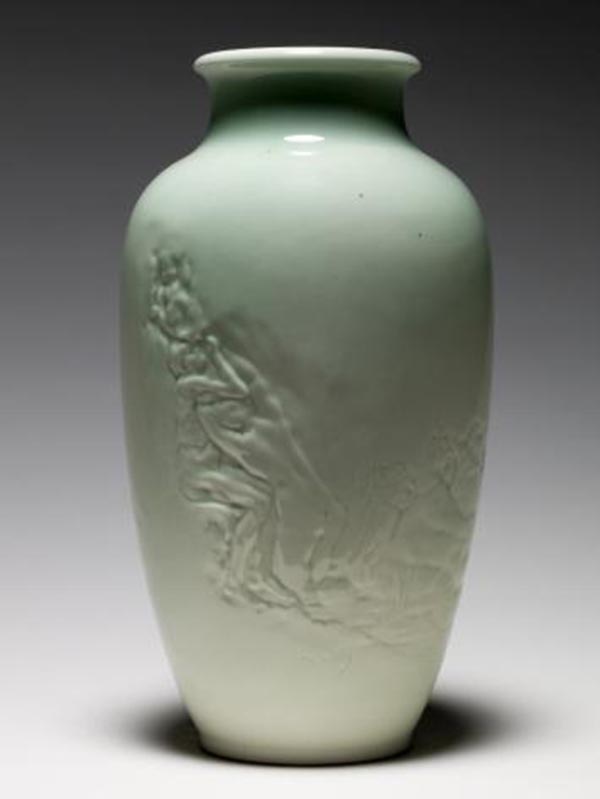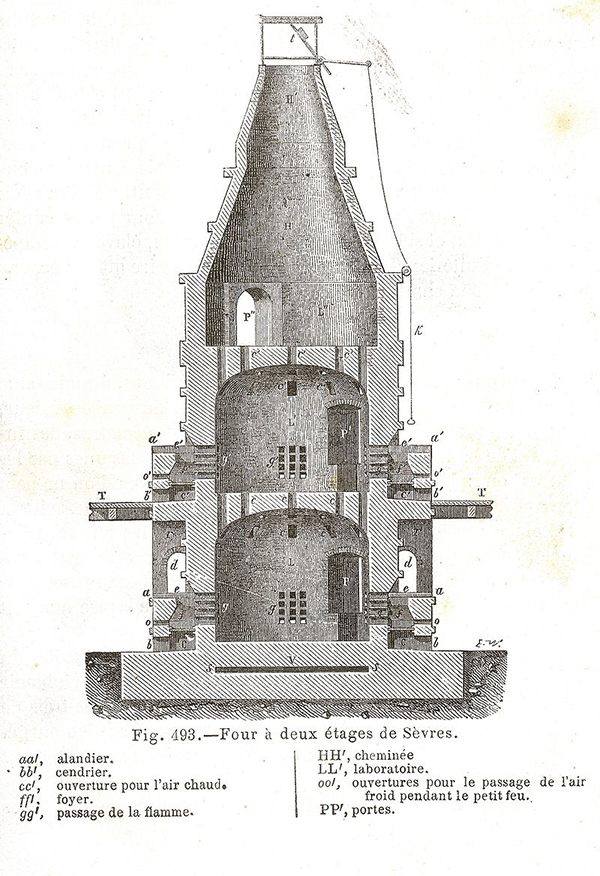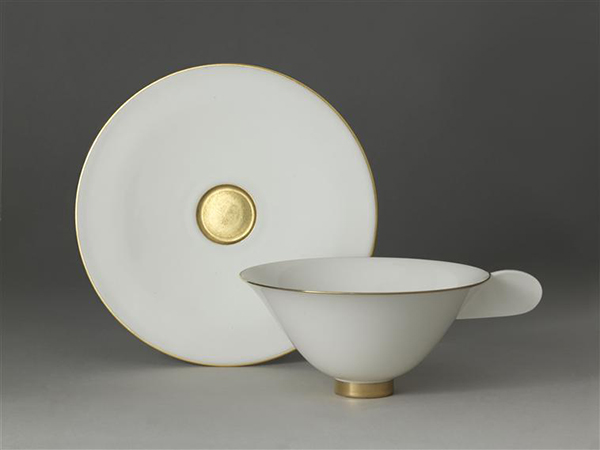Sèvres porcelain
Download PDFThe Sèvres - Cité de la céramique (City of Ceramics), also known as the Manufacture nationale de Sèvres and formerly Manufacture de Vincennes, is probably one of the most principal European porcelain manufactories as it has contributed to the evolution of porcelain since 1740.
In 1709, Johann Friedrich Böttger develops method to make hard-paste porcelain thanks to the discovery of a kaolin field in Saxony : the Meissen porcelain is born. He then creates the first hard-paste porcelain manufactory out of China and enjoys great success. Soft-paste porcelain manufactories try to overcome this competition, especially the manufactory of Chantilly.
In France, in 1738, Jean-Louis Henri Orry de Fulvy buy to defective workers the trade secret of the porcelain of Chantilly and in 1740 he installs a soft-paste porcelain workshop in a tower of the Château de Vincennes. Louis XV and Madame de Pompadour support this project in order to compete the Meissen and the Chantilly porcelains. However, Saxony will jealously guard the secret of hard-paste porcelain (made up of nearly 75% of kaolin) for almost the half of a century, although this porcelain was very coveted by the European courts.
After the death of Orry de Fulvy, the Manufacture de Vincennes become royal in 1752 and responds to very important orders: in addition to Louis XV, the Empress of Russia orders a table service in 1754, for example. This same year, the well-known Vase with ears begins to be produced. This vase, whose shape is the work of Jean-Claude Duplessis, is characteristic of the taste for rococo-inspired decoration, as are the paintings by Boucher. It will seduce among others Madame de Pompadour and the Prince de Condé, whose two vases are now preserved in the Louvre Museum.
During this period, the creations of the Manufacture are inspired by the taste for Orient. This Boîte à thé des Indes (Tea Box of India), dated 1753, is one of the first objects created by the Manufacture of Vincennes, and is already characterized by its light and elegant aesthetic which will be the trademark of the Manufacture.
The Manufacture, entirely controlled by the Crown, enjoys a great reputation and, in response to more and more important orders, is transferred to Sèvres in 1756 in a larger building built by the architect Lindet thanks to Madame de Pompadour.
The quality of the materials, of the techniques and of the creations contribute to the success of the Manufacture whose models are made by renowned artists such as the goldsmith Duplessis Father who was the creator of many models from 1748 like the plate Duplessis, Decor with birds in 1758 whose naturalistic scene is inspired by the natural history illustrations very fashionable in this time. This service is made with the famous “Sèvres blue” (cobalt oxide incorporated in the covering) characteristic of the manufacture. Since the Second Empire, the Elysée Palace still uses models of this service.
From 1752, neither enamel or decoration are added to the sculptures, which are still bisques, to differentiate them from the polychrome production of Meissen, as these Candlesticks with children, inspired by François Boucher around 1773 to decorate the banquets of Versailles and replace the compositions made of sugar.
In 1768, Pierre-Joseph Macquer and Robert Millot, two researchers at the Manufacture de Sèvres, discover the first French kaolin field deposit near Limoges: hard-paste porcelains are sold in Sèvres two years later, such as the Litron coffee service, which illustrates both the taste for chinoiseries and gilding whose application is now facilitated through hard-paste. Thanks to this discovery, the Manufacture de Sèvres is developing, particularly from the beginning of the 19th century. The productions are characterized by their modernity and the diversity of styles.
During the First French Empire, the productions of the Manufacture do not fail to celebrate Napoleon. His conquests are thus evoked by creations whose decor is indicative of the wave of Egyptomania such as the Egyptian sugar bowl designed on the return of campaign.
The Manufacture is administered until 1847 by the scientist Alexandre Brongniart who participates in its influence. He develops new techniques, such as calibration and slip casting which are recognized during the 1851 World's Fair. He also worked on the creation in 1802 of the collection which will be used for the Ceramic Museum, the first museum exclusively destined for ceramics and fire arts. Open to the public from 1824, the Museum intends to present ceramics from all periods and places.
With the Bourbon Restoration and the reign of Louis Philippe I, the iconography is diversified and inspired both by Greek antiquity and ambient Romanticism. This egg-shaped Lancelle vase illustrates for example the neoclassical taste. During the Second Empire, the sculptures become again in vogue.
Although the industry is becoming more and more pressing and present from the Third Republic, the Manufacture de Sèvres intends to perpetuate artisanal and traditional techniques while still represent the trends. Japonism then Art Nouveau inspire creations as this Plain Service with a decor designed by Jules Auguste Habert-Dys, as well as this Vase Pommerets "pins".
The decoration of the vase The Centaurs is the fruit of the rare collaborations between the Manufacture and Rodin which occur at this time. The shape has been imagined by Albert Ernest Carrier-Belleuse, another great name who worked with Sèvres.
It is also during the Third Republic that the six large ovens with a cylindrical form separated into three levels were built by Ambroise Milet from 1877. This ovens are now listed historical monuments. Their firing (the heat is spread uniformly and is followed by a very gradual cooling) is the origin of the incomparable quality of the enamels and their size makes possible the production of monumental pieces.
In 1876, the Manufacture and the Museum were transferred into buildings bordering the Saint-Cloud Park built by the State, buildings listed historical monuments where a contemporary creation continues. During the Art Deco years, pure and minimalist porcelains are created, like this set of Cups and saucers designed by Jacques Emile Ruhlmann (1879-1933). Indeed, the capacity to create new forms while be inspired by the modern themes is the trademark of the Manufacture. However, the Manufacture will not stop doing reissue of its iconic models, symbol of excellence in French porcelain.




